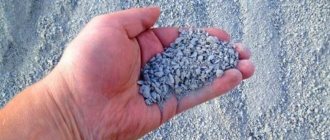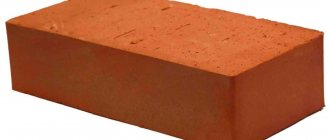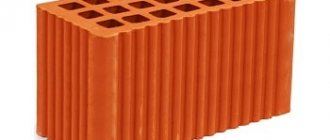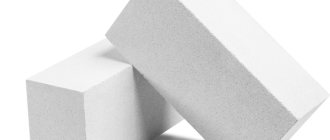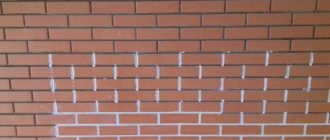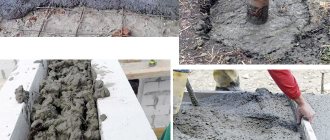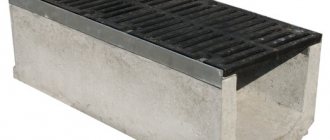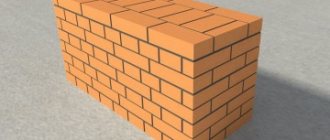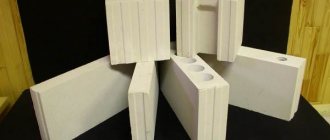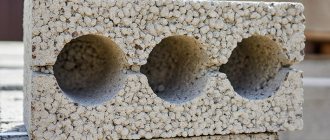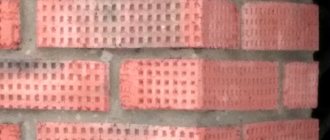Thermal conductivity coefficient of bricks
In the country's economy, the construction industry stands out as the most energy-intensive:
- 10% of energy is consumed by civilian facilities;
- 35-45% is spent on industrial buildings;
- 50-55% of energy consumption relates to residential buildings.
When designing buildings, thermal insulation and thermal protection are important for building structures. Human working and living conditions and the energy efficiency of facilities under construction largely depend on this.
The construction of structures for various purposes requires a correct assessment of humidity, air and thermal conditions.
This makes it possible to develop special methods for determining the thermophysical parameters of building materials and finished structures. These techniques will be different for different product materials.
Thermal performance indicators according to technical and regulatory documents are characterized by the thermal conductivity coefficient (λ). For brick, the parameter is an indicator of how the product transfers heat.
The higher the value, the lower the thermal insulation ability. When choosing insulation for a house, the value of λ should be as small as possible.
The coefficient is determined experimentally. This is a physical indicator that depends on air pressure, temperature, humidity of the environment and the substance of the product, the density and structure of the latter.
There is a formula for determining thermal conductivity. In accordance with it, the coefficient λ is directly proportional to the thickness of the layer (in meters) and inversely proportional to the heat transfer resistance of the layer.
The value obtained in the calculations is used in design to compare the thermal conductivity of different materials.
For enclosing structures, heat transfer resistance (R0) is determined for buildings and structures in accordance with GOST 26254-84. For a thermally homogeneous zone it depends on:
- Heat transfer resistance of external and internal surfaces.
- Air temperatures outside and inside the room, taken as the average measurement value for the calculation period.
- From the average actual heat flux density over the measurement period.
Marking of ceramic bricks
The marking of ceramic bricks provides complete information about its type. The brick size is indicated in millimeters in the format: length*width*height. The main characteristics given above must be indicated. To decipher the information, you need to remember the symbols of each type of material:
- K - brick
- Kl - clinker.
- R - private (construction).
- L - front (finishing, decorative).
- G - horizontal voids.
- Po - full-bodied.
- Pu - empty.
- Ш - polished.
- PG - tongue-and-groove.
The markings indicate all key characteristics, including size and type
After indicating the dimensions, the strength class, medium density class and frost resistance are indicated through the oblique. Here are some examples of markings and their explanation:
- KR-r-by 250*120*65/1NF/200/2.0/50. It should be read like this: ceramic brick (CR), ordinary (p), solid (po). Size 250*120*65 mm, 1NF - format and dimensions. Next come: strength class M 200, average density class 2.0, which corresponds to 1410-2000 kg/m³, frost resistance F50 (50 cycles).
- KRG-l 250*120*88/1.4NF/50/1.2/75. It sounds like this: ceramic brick (CR), with horizontal voids (G), facing (L). The size of the ceramic brick is 250*120*88 mm, standard size 1.4 NF. Strength class M50, average density class 1.2, which corresponds to a weight of 1010-1200 kg/m³. Frost resistance 75 cycles (F75).
- KM-pg 510/10.7NF/150/0.8/75. This designation is deciphered as follows: ceramic stone (CM) with a tongue-and-groove joint (PG), working part dimensions 510 mm, standard size 10.7 NF. Strength grade M150, density class 0.8 (energy efficient), frost resistance F 75.
The packaging (pallet) may contain a logo or other information at the discretion of src=»https://kak-sdelano.ru/assets/uploads/2019/03/krasnij-kirpich-17.jpg» class=»aligncenter» width= “1100″ height=”650″[/img]
The new marking method is close to EU standards. The standard does not prohibit factories from indicating additional characteristics in accompanying documents. You can also add additional information to the packaging to make it easier to identify the manufacturer.
Thermal conductivity of masonry
According to GOST 26254, λ is determined for brick and block masonry. To do this proceed as follows:
- During the observation period, the readings (arithmetic averages) for all thermocouples and tiplometers are determined.
- For masonry surfaces located inside and outside buildings and structures, the weighted average temperature is calculated based on test results. The area of the mortar joints in the horizontal and vertical sections, as well as the area of the bonded and tread sections are taken into account.
- Thermal resistance for masonry is determined.
- The thermal conductivity coefficient of masonry is calculated from the value of thermal resistance.
Laying technologies
Air gaps are made in the brickwork to reduce the accumulation of moisture in the walls and reduce the heat transfer coefficient.
The air layer in the walls is correctly ensured as follows:
- The solution does not fill air gaps up to 10 mm thick between products starting from the 1st row. 1 meter is a common gap spacing.
- For the type of facade with ventilation, an air gap of 25-30 mm thick is left along the entire height of the masonry between the heat insulator and the brick. When the heating system operates in winter, the temperature in the house will remain constant. The heat-preserving properties of the wall will be ensured by constant air flows that will pass through the provided air channels.
Constant circulation through the air channels inside the masonry is possible if it is not closed on the last row with a ceiling made of any building materials or a mortar screed.
For private construction, it is important to achieve a significant reduction in the λ coefficient from a brick wall without incurring large expenses.
Insulation of the building
Additional thermal insulation of construction projects helps to increase their energy efficiency. Insulation can be located inside and outside buildings.
The heat insulation material is attached to the walls with dowels and glue, staples and screws, with or without lathing. Polymer plaster and foam mixtures can be applied using reinforcing mesh.
For external insulation, prefabricated products are produced: thermoblocks, ventilated facades, fixed to the walls using special structures.
Disadvantages of thermal insulation with plaster on the outside:
- With frequent changes in air temperature, a zone of high humidity is created at the boundary of the media formed by the insulation elements and the wall. This is important to consider for insufficiently thick layers of plaster made over metal, fiberglass or polymer mesh.
- After 3-4 years of operation, the façade finish begins to deteriorate. The solution can withstand on average about 50 cycles of hot-cold changes.
- The health of those living in the house can be adversely affected by damage to structures by fungus and mold.
Different thermal insulation systems can disrupt the vapor permeability of the structure. This often causes condensation to form between the facade layers, plaster and insulation. It reduces the service life of insulation and finishing, leads to the decomposition of polystyrene foam with the release of toxic substances.
Advantages and disadvantages
Everyone probably knows what photo wallpaper is - it’s an image on paper or another base, which is glued to the wall in parts, and in the end you get a complete picture for the entire wall or part of it. Photo wallpaper as a finishing material has many advantages
, the main ones being:
- excellent appearance - photo wallpaper can imitate any landscape, still life, convey a pattern or even a photograph, thereby enlivening the room and giving it a certain mood;
- as already noted, the choice is simply huge, there is the possibility of individual orders;
- a relatively quick method of gluing, as well as relative durability. Thus, modern photo wallpapers are printed in such a way that they are practically not affected by sunlight and do not fade. Wallpaper can be glued with glue or be based on self-adhesive paper, so there is always a choice between several options. And the ability to coat photo wallpaper with varnish solves many issues of care and durability.
No matter how wonderful the aesthetic properties of photo wallpaper may be, there are still some drawbacks
it didn't work out:
- Photo wallpapers require a perfectly flat and smooth surface - only then will they look as impressive as possible and last a long time;
- The process of gluing photo wallpaper, although it does not require special preparation, will still take some time and require attention, effort, perseverance and patience;
- some low-quality photo wallpapers may come off over time, and you will have to re-glue them every now and then;
- and, of course, the most important thing is not to make a mistake with the drawing, otherwise it will not bring pleasure, but complete irritation.
What does the indicator mean?
The cold area of the material constantly receives heat from the warmer parts. Their process of heat movement is carried out through electromagnetic interaction at the level of quasiparticles, electrons and atoms.
The physical meaning of the thermal conductivity index is the amount of heat that passes through a unit cross-sectional area in a unit time interval.
Depending on the thermal conductivity coefficient, GOST 530-2012 divides the efficiency of the fold into the following types:
- ineffective (ordinary) - from 0.46 and above;
- conditionally effective - 0.36-0.46;
- effective - 0.24-0.36;
- increased - 0.2-0.24;
- high - less than 0.2.
Based on the composition of masonry mixtures, the thermal conductivity value in engineering calculations is selected from 0.47 and above.
The desired temperature regime is better maintained when using building materials with high heat capacity. This parameter characterizes how much heat is needed to heat an object to a given temperature per unit time. The units of measurement of the indicator are J/0C, J/K.
Properties of different types
Different building materials differ in their ability to conduct heat, which depends on the following parameters:
- Humidity. 0.6 is the λ value for water. Moist, saturated air or liquid droplets replace dry air in the insulation powder and wall structures when they become wet. This leads to an increase in thermal conductivity.
- Density. Thermal energy is better transferred if the particles in the body are located more closely and in greater numbers. The dependence of the density and thermal conductivity of the material is determined empirically or on the basis of reference data.
- Porosity. The homogeneity of the structure of products is disrupted due to the presence of pores in its composition. The air-filled volume occupied by the pores transfers part of the energy of the heat flow. For dry air, the λ cut-off value is 0.02. The thermal conductivity of building materials will be less if a larger volume is occupied by air pores.
- Pore structure. The heat flow reduces the speed if there are small closed pores in the products. Thermal convection will participate in heat transfer when there are relatively large interconnected pores.
Red ceramic
Fine-grained clay is the main component in the production of ceramic bricks. The finished product also includes water, sand and additives that improve the initial quality of raw materials.
Products crack less when they contain a more elastic solution, the quality of which is modified using plasticizers.
For ceramic bricks, good frost resistance is the main advantage. It is able to withstand 250-300 freezing and thawing cycles.
The red ceramic brick made in Russia is 6.5 cm thick and 25 cm long. For a double, the thickness is 13.8 cm, 8.8 cm for a one and a half.
Hollow and solid products will have different volumetric weights. Structures built from brick will have a lower thermal conductivity, the more porous the material was used in construction. For solid bricks, the void ratio cannot be more than 30%.
To create voids inside the product, a “mixture” is used - peat, coal crumbs, sawdust, finely chopped straw. It is added to the clay mass. Voids are formed when additives burn out when clay is sintered in ovens with temperatures of 1000°C.
Based on density, brick is divided into 7 categories - from 2.4 to 0.7. Each product class has its own thermal conductivity.
0.6-0.7 - thermal conductivity coefficient for products with a solid structure. For hollow ones - 0.5-0.25 W/m*0С.
Load-bearing walls are not made of hollow materials, so most often they require additional insulation.
Clinker
This type of brick is obtained from a mixture of silicates and minerals, water, refractory crushed clay, which is processed after molding at high temperatures (up to 13,000). Tunnel ovens are used for this.
If the production technology is followed, a product without finely dispersed pores with high strength and natural shades is obtained. The parameters of finished products are determined by GOST 530-2012.
Clinker bricks are most often produced with precise geometry. To improve the thermal insulation qualities and lighten the weight of the final structure, it is made hollow.
Material characteristics:
- Frost resistance more than 100 cycles.
- Minimum strength grade M250.
- 1500 kg/cm3 is the lowest density indicator.
- High fire resistance, resistance to biological threats, ultraviolet radiation.
- 6% - maximum water absorption.
- Thermal conductivity coefficient is 1.15 W/m*0С.
Characteristics of fireclay
This type of brick is made from a special clay - yellow fireclay. The resulting products are a heat-resistant material that, under difficult conditions of high temperatures, even under high pressure, is able to resist deformation. They can easily tolerate prolonged contact with open fire.
Aluminum oxide is the main substance that is included in the refractory mixture. It provides bricks with resistance to aggressive environments and high strength under mechanical stress.
The material is divided into 8 groups according to voidness indicators. The maximum value is 85%, the minimum is 3%. The lower the specific gravity of the product, the lower the strength characteristics.
Building materials manufactured in accordance with state standards have the following indicators:
- 7% - water absorption;
- high resistance to acids and alkalis;
- 3.7 kg - average weight;
- 1350°C - operating temperature, 1750° - maximum;
- 15-23 N/mm2 - compressive strength value;
- 0.84-1.28 W/m*0С - thermal conductivity coefficient.
Silicate
The material is obtained under a pressure of 12 atm. and temperature 200°C using the autoclave method. Its composition includes, in addition to modifying additives, lime, quartz sand in a ratio of 1 to 9.
Alkali-resistant pigments, which are added to the raw materials at the pressing stage, help make colored versions of products.
GOST 379-95, 379-2015 determine the requirements for sand-lime bricks. 15-31% is the voidness rate. Product weight is from 3.2 to 5.8 kg.
Density characteristics:
- 1450 kg/m3 - for hollow bricks of grade M150;
- 1700-2100 kg/m3 - for full-bodied M150-200.
The thermal conductivity of hollow silicate products is 0.56-0.81 W/m*0C, and 0.65-0.88 for solid ones.
Types of facing bricks
Decorative facing brick for exterior finishing is a building material that is not a full-fledged brick. The quality remains the same, only the appearance changes when the fired clay briquette is cut into two halves. Thanks to this, brick wall cladding is made in a lightweight version.
Facade brick is a smooth material that has no defects and is available in a wide range of stores. Available in any color, size and shape. From light, pastel colors to radical blacks. A huge selection of options for decorating a house made of facing bricks for every taste and color. Available in classic single and slightly larger one and a half sizes.
The shape can be standard - rectangular, and figured - with oblique edges. Finishing the facade with facing bricks will give the building a finished, respectable appearance, which will not only update the house or cottage, but also change the entire design of the site for the better.
Narrow facing bricks have an advantage over regular bricks; they are lightweight, which lightens the load on the foundation. This method does not require massive cement pouring. There is not just a thin brick, but also a flexible one. Let's take a closer look at it.
Flexible facing brick
Flexible brick is made on a polymer base; in fact, it is not a natural material, it imitates brickwork. But flexible brick is resistant to wear and atmospheric changes. It can be used outside the building at temperatures from -40 to +100 degrees. Lightweight, no more than five kilograms per square meter of cladding, it does not load the building.
Flexible facing bricks are easy to install. It can be installed on old brickwork, on sip panels, on plaster, and even on porous concrete. There may be insulation under the polymer brick; the main thing is to use a special reinforcing mesh between the cladding and the insulation.
Next, we will consider the main types of natural facing bricks for facades, their pros, cons and features, so that you can decide which facing brick to choose.
Ceramic facing brick
Ceramics is a common and well-known material that has the natural color of baked clay. In the manufacturing technology, clay is mixed with a concrete mixture, and dye is added to it. Ceramic facade bricks are fire resistant, have excellent thermal insulation, and are resistant to sub-zero temperatures. The material has the properties of maintaining its attractive appearance for a long time. French, Dutch and German bricks are considered one of the most reliable and high-quality materials.
Important! When choosing a brick, you should pay attention to the appearance and number of holes and their size. Covering a house with facing material will result in economical mortar consumption and a minimum number of holes in the brick.
The main disadvantage of ceramic material is its high moisture absorption. It is necessary to treat the surface of the brick with water-repellent solutions - water repellents. In the opposite case, without appropriate treatment, when the liquid penetrates the pores of the texture and freezes, as a result of which cracks appear in the brick.
Facade clinker brick
Clinker is a clay solution with a small mixture of water that is fired. The finished material has excellent resistance to moisture, is not afraid of large differences in temperature changes, is frost-resistant and durable. Available in a variety of colors, with a variety of brick textures with imitation stone.
Clinker cladding is used for façade walls, landscaped areas, fences, paving areas and paths. It is possible to create various mosaics and patterns thanks to laying with a flat side or an “edge”. The only negative is the high price of the front material.
Hyperpressed facing brick
Technologies for manufacturing hyper-pressed facade bricks - a solution of a cement mineral mixture is processed under high pressure, due to this, voids and pores in the material are reduced. The material is not fired. Brick has minimal permeability to moisture, excellent thermal conductivity, and good cost. The downside is the appearance of cracks on the surface of the brick façade due to temperature changes during the winter season. This façade brick requires waterproofing.
Hyper-pressed decorative brick serves to solve multiple design ideas. This type is available with imitation stone or retro brick wall style.
Facing sand-lime brick for exterior finishing
Sand-lime facing brick is a durable, environmentally friendly building material. Its composition includes lime - 10%, sand - 90% and water has precise geometric dimensions and a beautiful appearance. A facade covered with this type can last more than 50 years. Excellent resistance of the material to low temperature extremes combined with high strength and reliability. The advantages of silicate facades in comparison with ceramic bricks are their increased density and good sound insulation.
The advantages are that if you cover a building of any type of construction or reconstruction with colored, textured brick, it will not only decorate the facade, but will also be unpretentious to external factors. Does not require special care or washing. The color is not affected by solar radiation and precipitation.
Among the disadvantages, one should point out the low properties of silicate facing bricks, which consist in low heat resistance and moisture resistance. Does not tolerate frequent high moisture and negative environmental influences.
What is the thermal conductivity of products
To analyze the thermal conductivity of brick products, Fourier's law is taken into account. The temperature difference affects the indicators that determine the heat flow.
Sand-lime bricks used for finishing facades have thermal parameters lower than ceramic ones. Therefore, products made from silicate materials are warmer with the same size structures.
Products made from red hollow ceramic bricks have a thermal conductivity coefficient of 0.56.
The performance of finished buildings is influenced by the quality of the masonry. It is important that the masonry mortars used are non-greasy. The layer density should be no more than 1800 kg/m3 and minimum thickness.
Thermal calculations and the required load-bearing capacity determine the thickness of the load-bearing wall in the building. To meet modern requirements when reconstructing houses built in Soviet times, the thickness of their walls needs to be about 1 m. This cannot be cost-effective, so various insulation systems are used.
If the insulating part of the wall is combined with stone, the structure turns out to be layered, then this installation is called effective. It is often used in low-rise construction to increase the usable area of premises and reduce material costs.
//www.youtube.com/watch?v=NjQhpwCjYQI
Types of materials and their characteristics
Brick, produced today in many types, is used in construction everywhere. Not a single object - a large industrial building, a residential apartment building or a small private house - is built without a brick foundation. The construction of cottages, popular and relatively inexpensive, is based exclusively on brickwork. Brick has long been the main building material.
This happened due to its universal properties:
- reliability and durability;
- strength;
- environmental friendliness;
- excellent sound and noise insulation characteristics.
The following types of bricks are distinguished.
- Red.
Made from fired clay and additives. It is distinguished by reliability, durability and frost resistance. Suitable for erecting walls and building foundations. Usually placed in one or two rows. Thermal conductivity depends on the presence of gaps in the product.
- Clinker.
The most durable and dense facing brick. Due to its high density, a solid, solid and reliable stove material also has the most significant thermal conductivity coefficient. And therefore it makes no sense to use it for walls - it will be cold in the house, and significant insulation of the walls will be required. But clinker brick is indispensable in road construction and when laying floors in industrial buildings.
- Silicate.
An inexpensive material made from a mixture of lime and sand; products are often combined into blocks to improve performance properties. When constructing buildings, not only solid silicate, but also silicate with voids is used. The durability of the sand block is average, and the thermal conductivity depends on the size of the connection, but still remains quite high, so the house will require additional insulation.
The indicator for a slotted briquette is lower compared to its analogue without internal gaps. It should also be noted that the product absorbs excess moisture.
- Ceramic.
Modern and beautiful material, produced in a wide range. If we talk about thermal conductivity, it is significantly lower than that of ordinary red brick.
There are full-bodied ceramic briquettes, fire-resistant and slotted, with voids. The heat conductivity coefficient depends on the weight of the brick, the type and number of cracks in it. Warm ceramics are beautiful on the outside and have many fine gaps inside, making them very warm and therefore ideal for construction. If the ceramic product also has pores that reduce weight, the brick is called porous.
The disadvantages of such bricks include the fact that individual units are small and fragile. Therefore, warm ceramics are not suitable for all designs. In addition, this is an expensive material.
As for refractory ceramics, this is the so-called fireclay brick - a burnt block of clay with a high thermal conductivity, almost the same as that of ordinary solid material. At the same time, fire resistance is a valuable property that is always taken into account during construction.
Fireplaces are made from such “stove” brick; it has an aesthetic appearance, retains heat in the house due to its high thermal conductivity, is frost-resistant, and is not susceptible to acids and alkalis.
Specific heat capacity is the energy required to heat one kilogram of material by one degree. This indicator is needed to determine the resistance to heat of the walls of a building, especially at low temperatures.
For products made of clay and ceramics, this figure ranges from 0.7-0.9 kJ/kg. Sand-lime brick gives values of 0.75-0.8 kJ/kg. Fireclay is capable of increasing heat capacity from 0.85 to 1.25 when heated.
What influences the indicators
Thermal conductivity of a building material is the ability to transmit heat through its thickness and stationary internal processes occurring inside it at the same time. Close contact is a prerequisite for the transfer of heat from one object to another, therefore only solid bodies have pure thermal conductivity.
The λ indicator is influenced by:
- humidity;
- temperature;
- porosity;
- pore shapes and structure;
- phase composition of moisture;
- density.
The presence of closed and small pores greatly reduces thermal conductivity. Effective thermal insulation is reduced by convective air flows that occur in large interconnected pores. The orientation, size and shape of pores are important for heat transfer.
The substances that make up the material, by their chemical nature, determine the ability to retain thermal energy. The value of λ is smaller, the weaker the atomic groups or heavy atoms that form the crystal lattice of the substance are connected to each other.
